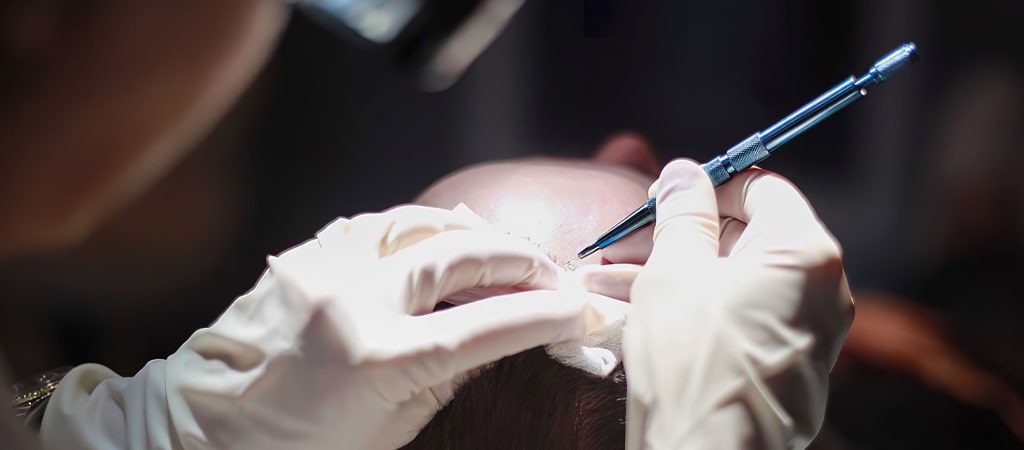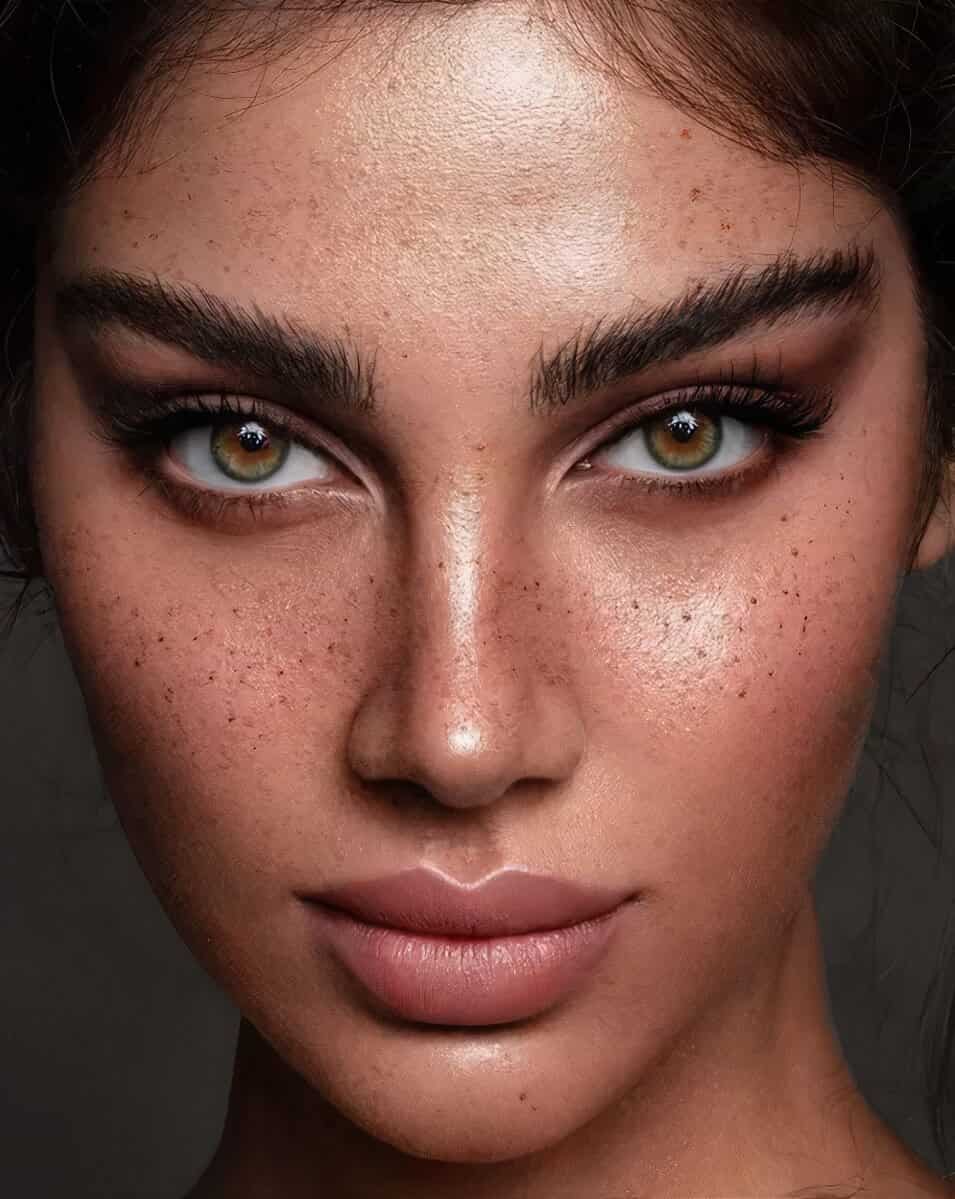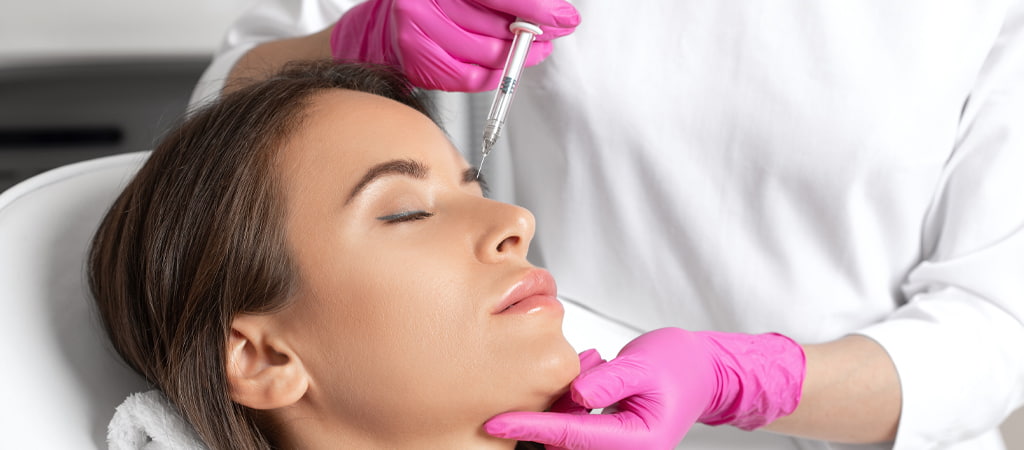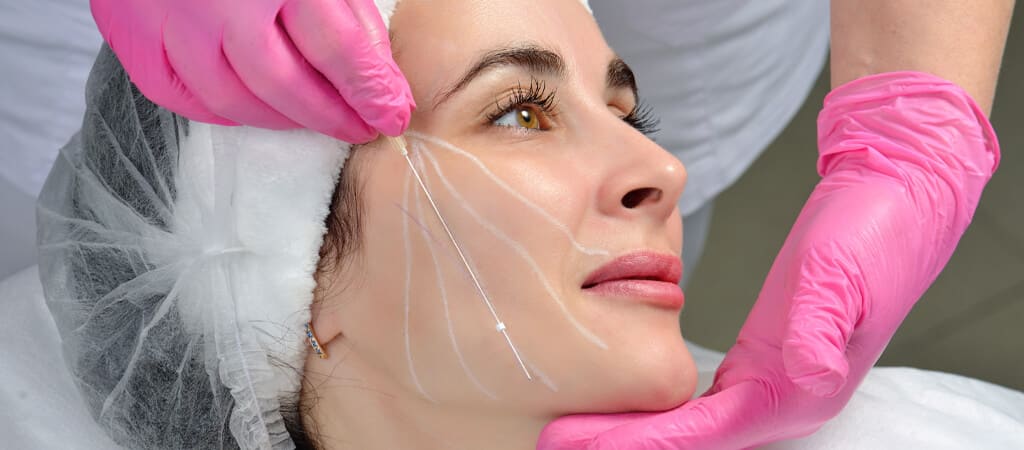Who are chin fillers suitable for?

Chin tip filling is a non-surgical aesthetic application performed to add a proportional appearance by giving soft transitions to the asymmetrical structure on the face. The application is performed by injecting the filler under the skin.
Facial features can appear too sharp or lack definition altogether, chin filler application aims to provide a smoother, more defined transitional result. Individuals who are after a more symmetrical jawline without jawline prosthesis surgery and the incision scars, may consider chin fillers.
Further benefits of chin fillers include:
- Prevents sagging of the skin under the chin that occurs due to aging
- Provides a smaller chin structure to individuals with a larger structure.
- To have a jaw structure that looks more aesthetically pleasing to the eye.
- To amend the look of the tip of the chin being too pointed or flat, too far back, too small or too wide.
- To achieve a more pleasing result without visible signs of scars.
Age-related sagging on the jaw line, which intensifies with the appearance of a double chin, can sometimes appear at the age of 35 and later.
Therefore, while it is seen that people who have chin fillers due to sagging are on average 30 years old and above, there is no age scale for people who undergo the procedure, making it an option for those looking into the procedure. Always seek medical advice first.

Who can consider chin fillers?
Chin fillers are generally suitable for everyone.
Individuals who have orthopedic disorders or suffer Retrognathia, where the lower jaw is much further behind the upper jaw may find chin fillers a solution.
Microgenia is a condition where the tip of the chin is relatively smaller than normal. Individuals with this condition may opt for chin fillers as the filler corrects the disproportional area revealing a more symmetrical appearance.
Chin fillers are also very popular to aid jawline disorders which stem from aging.
Above all the major reason why men and women choose chin fillers is for its aesthetic purposes. While men are after a more sharper, prominent, and defined jawline appearance, women are looking to achieve a more softer, oval smooth result.
How are Chin Fillers applied?
Chin fillers are performed by medical aesthetic physicians and plastic surgeons. At the first consultation, the physician will examine the area and ask the patient about any pre-existing, long term skin conditions and/or medication use, like blood thinners. The physician will also determine if extra jawline support is required.
Once everything is good to go, a numbing cream is applied to the area to be treated. Once the filler is injected, the physician will use massaging techniques to give the chin area the desired shape.
What to expect after a Chin filler application?
After the application, patients may experience minor side effects including mild redness, swelling and/or bruising, however should clear within a few days. It’s important for patients to consume plenty of water for a week after the procedure to achieve maximum results and longer lasting outcome.
Patients can start to see changes within 2-7 days after application. The physician may also recommend aftercare creams to help with side effects to essentially reduce healing time.
What are the advantages of Chin fillers?
The advantages of the app are generally as follows;
- Repairs the appearance of sagging in the chin and jowl due to aging.
- Creates a softer, more smooth result fir chin shapes that are pointed and more masculine.
- Creates a more emphasized tip of the chin on round faces,
- An affordable alternative to reveal aesthetically, prominent facial features.
- Painless alternative.
Chin Fillers FAQ’s
How long do Chin fillers last?
How long do Chin fillers last?
There are several types of contents used for chin fillers. The first most common injection is hyaluronic acid. Amongst many benefits, Hyaluronic acid is known for its high moisturizing benefits, removing roughness and helps achieve brighter skin. The longevity of a Hyaluronic acid treatment can be between 6-12 months.
Another form of injection is the use of autologous cells. Autologous procedure is where cells are obtained from the individual's own healthy tissue. The longevity of this procedure can be up to 2 years.
There are factors however that may change the lasting periods of both procedures. These include the individual's skin structure and fat tissue, the amount of times the individual has had the procedure done, as well as the age of the individual.
How long does the chin filling procedure take?
How long does the chin filling procedure take?
A Chin filler procedure is a single session application that takes no longer than 45 minutes. Patients can expect to return to normal life after one session.
Are Chin fillers harmful?
Are Chin fillers harmful?
As there are no harmful substances in the injection content, the risks are quite low. Individual’s are advised to seek medical advice by the doctor to evaluate risk possibilities and/or allergic reactions.
Should Chin fillers be maintained?
Should Chin fillers be maintained?
Chin fillers are among the procedures that patients like to maintain, especially when the effects start to wear off. The doctor will decide the appropriate time between treatments.
Continuous repetition of the procedure reduces the durability of the treatment in the long term.





